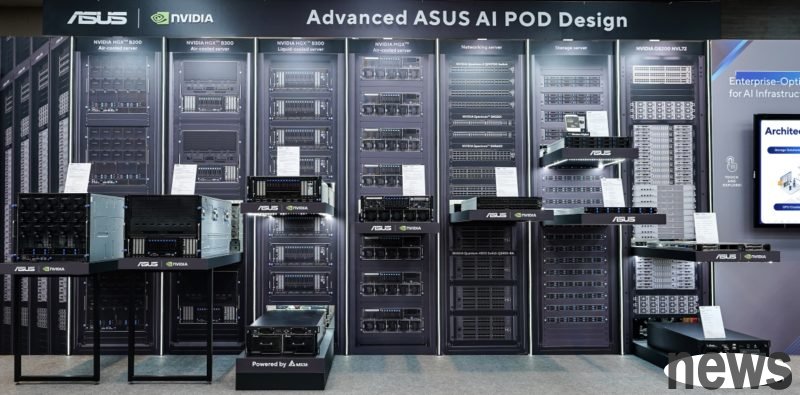NVIDIA's "AI Factory" concept hopes that every company can establish a dedicated AI factory if it wants to introduce AI. It not only deploys hardware equipment such as accelerated computing, but also integrates data into AI tools to cr...

NVIDIA's "AI Factory" concept hopes that every company can establish a dedicated AI factory if it wants to introduce AI. It not only deploys hardware equipment such as accelerated computing, but also integrates data into AI tools to create application services with top computing equipment such as ASUS AI POD, which can provide user usage, drive production capacity and improve daily life.
Since the release of OpenAI, ChatGPT has set off a wave of Generative AI (Generative AI) and has been widely used in various fields such as customer service robots, program design, image generation, etc. Through the process of data acquisition, training, micro-tuning and large-scale reasoning, we promote AI to develop agent AI (Agentic AI), which can be used by enterprises and individuals, help enterprises improve efficiency and be used in a convenient way in life. The next stage is Physical AI (Physical AI), which accelerates the development of physical robots.
As AI continues to develop, Zhou Yu-hai, the technology manager of Huawei Computer AI/HPC, has observed from the customer's perspective that since some applications are mature, customers want to implement and build a reasoning environment on the local side, which can be used internally for the enterprise or support external services, so the scale of computing hardware demand is getting bigger and bigger.
From a one-piece large host to a side-mounted computing device, China combines NVIDIA's advanced technology with a comprehensive layout:
First, the ASUS AI POD, which is based on NVIDIA GB300 NVL72, uses a fully liquid-cooled machine rack, which will be fully liquid-cooled in conjunction with the machine room. Huafa can achieve a complete set of solutions from liquid cooling primary testing, secondary testing, to heat dissipation, and then to the network design and storage design of the entire machine room to achieve a complete set of solutions, meeting the high computing power demand such as CSP (Cloud Service Provider).
For customers with small and medium-sized AI training or integrating NVIDIA Omniverse and OpenUSD applications with complex digital student solutions, they can choose a Chinese server that uses NVIDIA RTX PRO 6000 Blackwell server version GPUs.
NVIDIA GB10 super chips are equipped with personal AI super computers NVIDIA DGX Spark and ASUS Ascent GX10. This part of the Chinese are in the first wave of cooperation list.
Deep integration of software and hardware to create AI powerWhen enterprise introduction of AI, it is necessary to cover data sets, hardware architectures, and back-end connection of AI tools, and requires professional talents with AI knowledge to operate. This is indispensable for the development of AI applications. For this reason, China proposes the right direction to help customers successfully enter AI.
Zhou Yuqiu gave an example on the CompuForum 2025 forum. If the customer has insufficient information, the data set can be created in the virtual environment through NVIDIA Omniverse. Enterprises understand their own needs and build hardware through the ASUS AI Factory architecture, and use NVIDIA AI Enterprise to introduce upper-level software, so they can provide users with online services.
From GPU collection, storage collection, network architecture, management platform and application software, Huancheng deeply integrates software and hardware, allowing enterprise customers to manage and monitor through a single interface.
Specifically, Huasheng launched two sets of software this year - ASUS Infrastructure Deployment Center (AIDC) and ASUS Control Center (ACC). AIDC can be deployed in large quantities through one device, installed and configured by systems, networks, related kits, etc., and can establish a software architecture of computing sets within one day. ACC is used to monitor hardware equipment conditions, such as ACC can achieve complete monitoring through ACC.
In fact, China has established a solution team within the China National Taiwan University to provide consultation services to customers, assess whether the construction of machine rooms and application introductions are feasible from the customer's needs, and then transferred to customers by a series of educational training to ensure that the customer's IT can carry out continuous maintenance after the service is online, and China National Taiwan University can provide all-round assistance.
Huawei is not only a hardware supplier, but also a software provider. It lays the foundation for NVIDIA's advanced technology and software hardware products, and creates a complete set of solutions to accelerate customers' exploitation of AI capabilities and improve operational effectiveness.